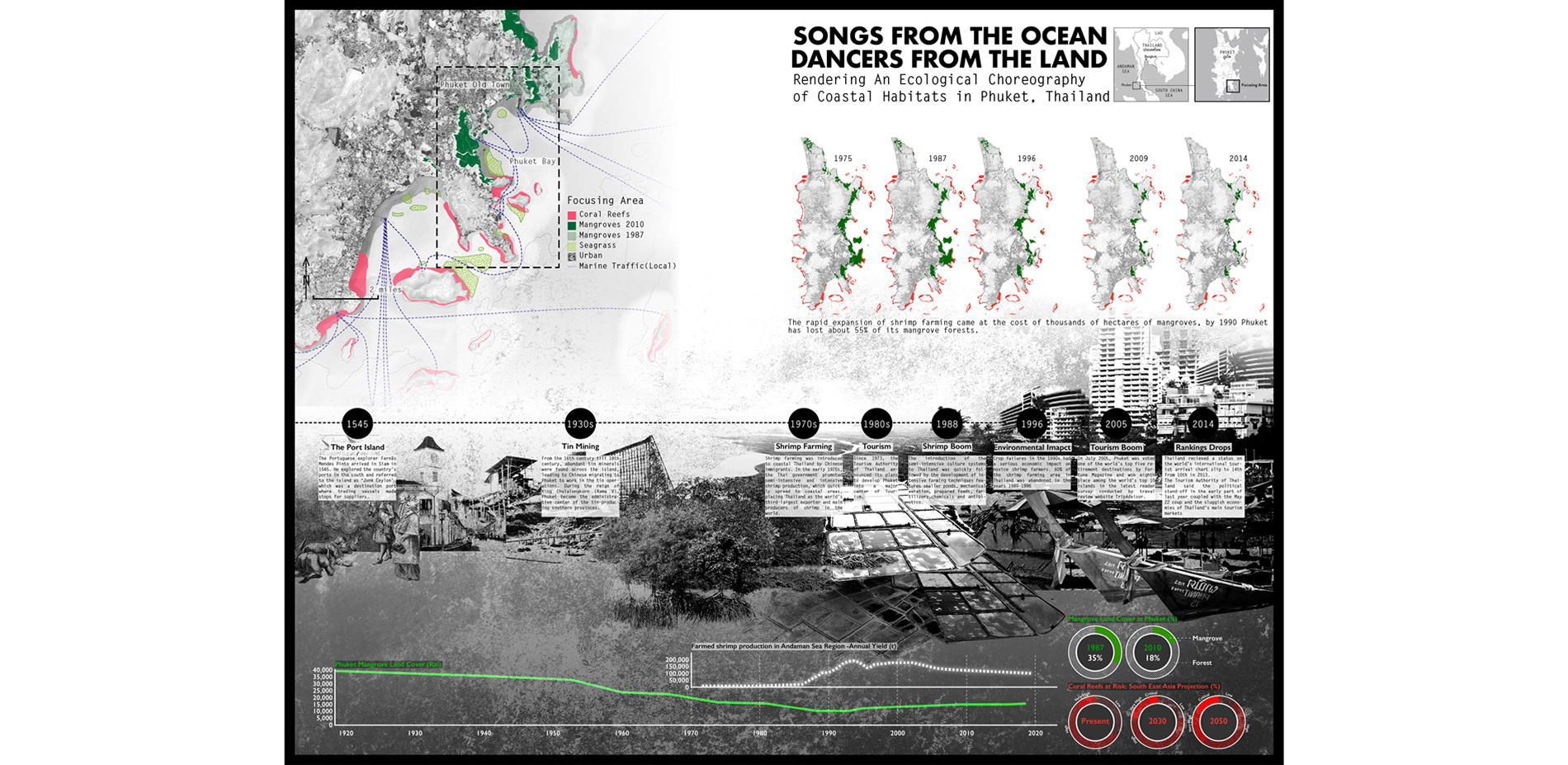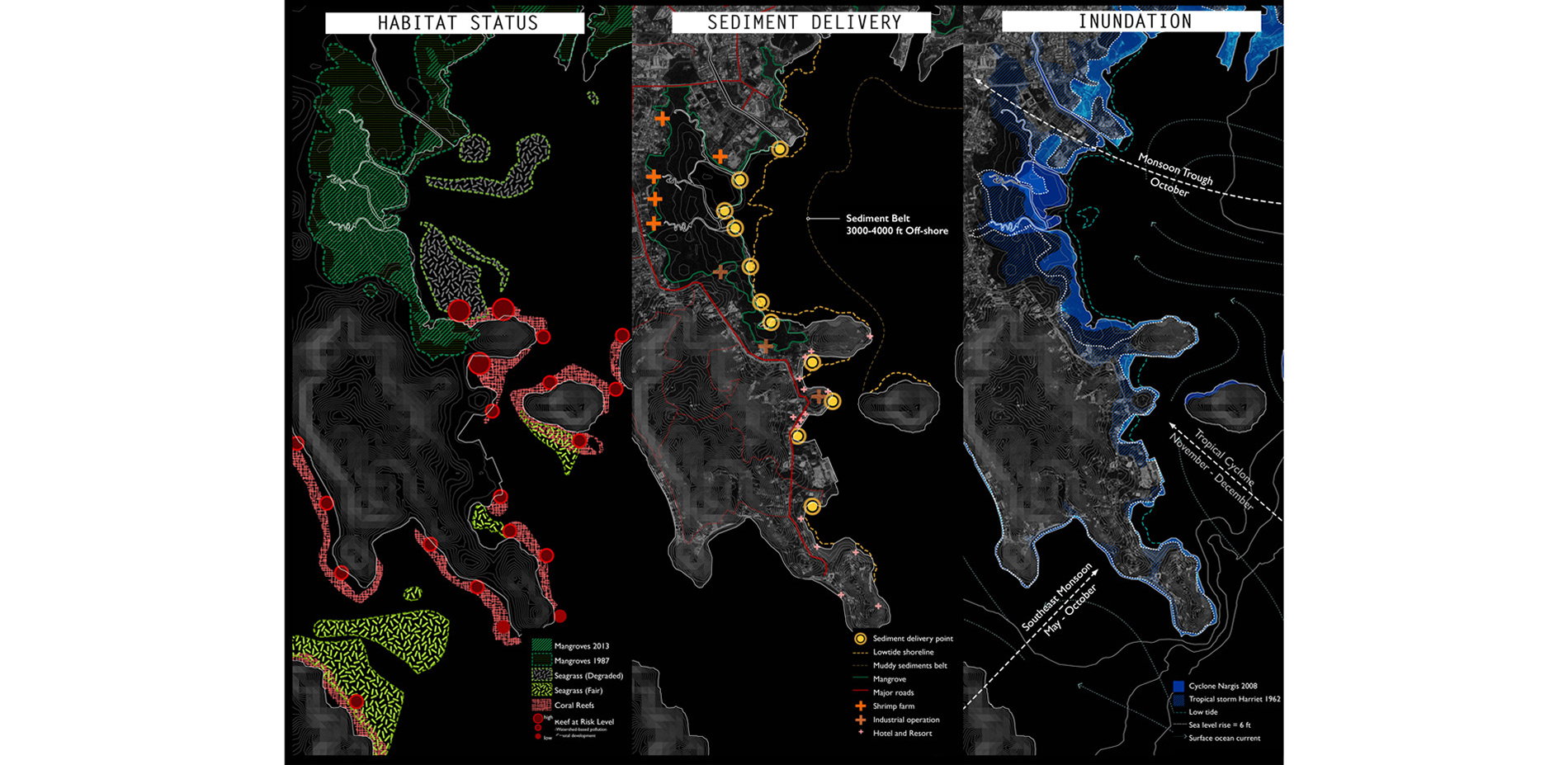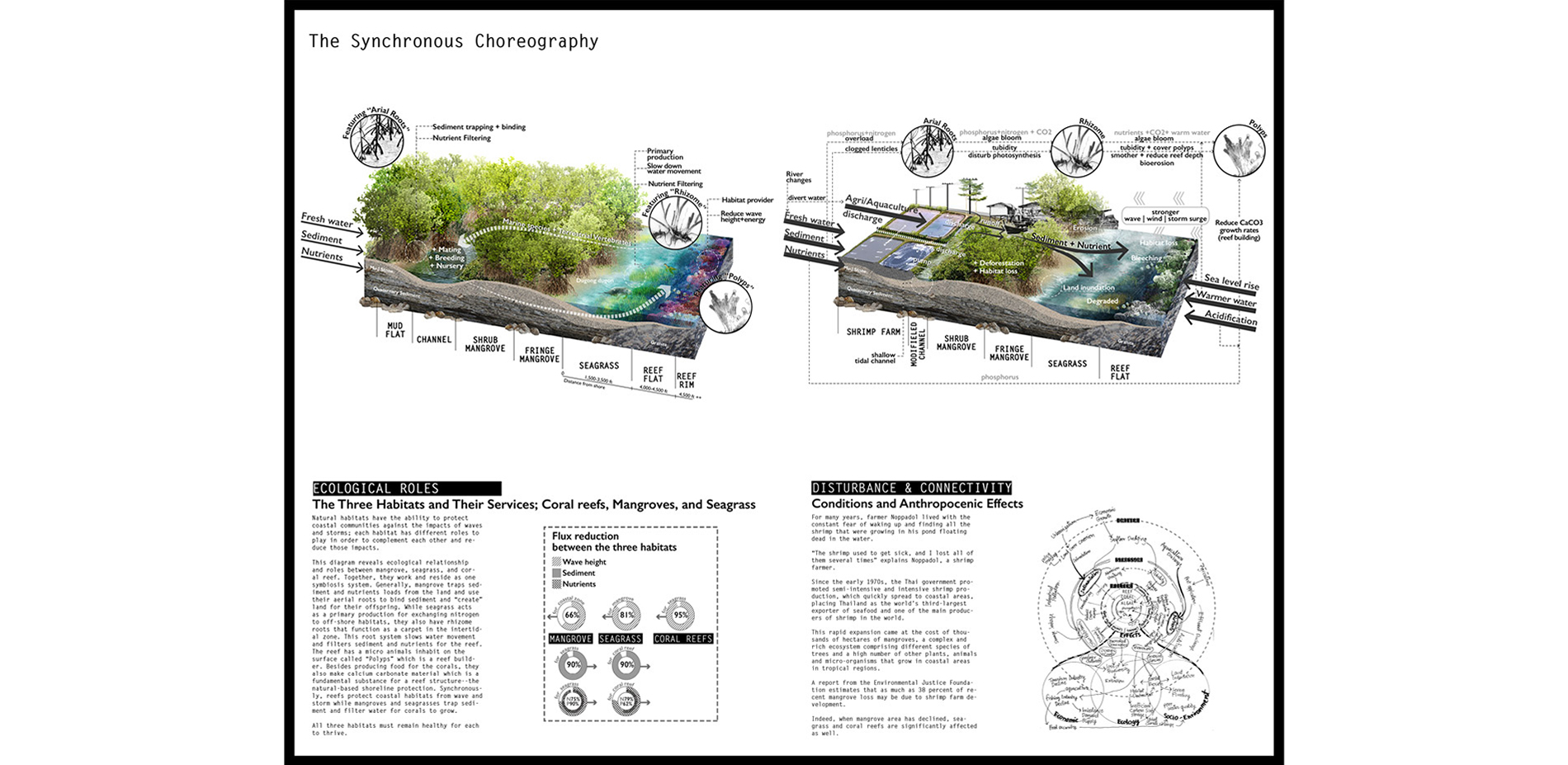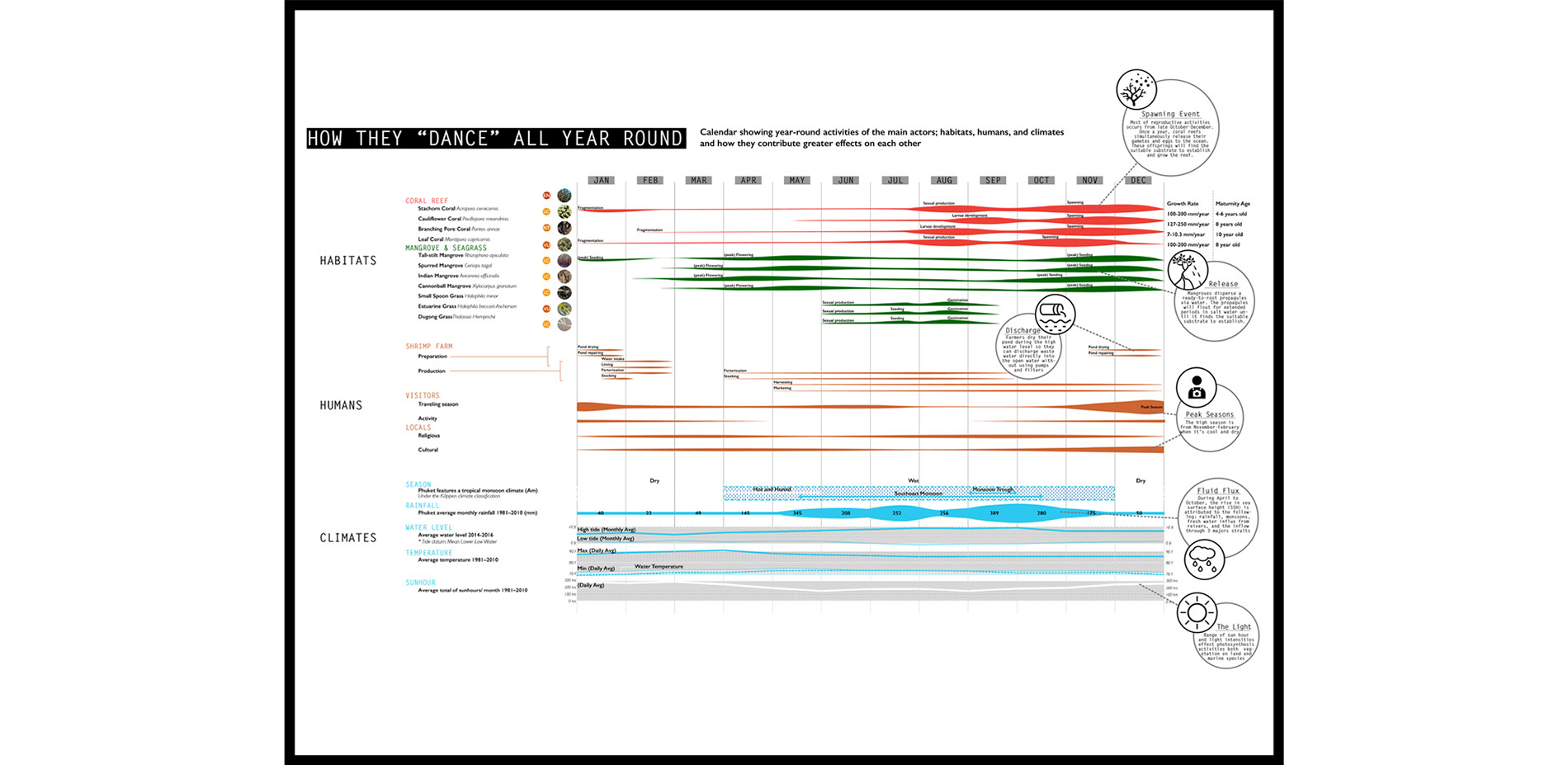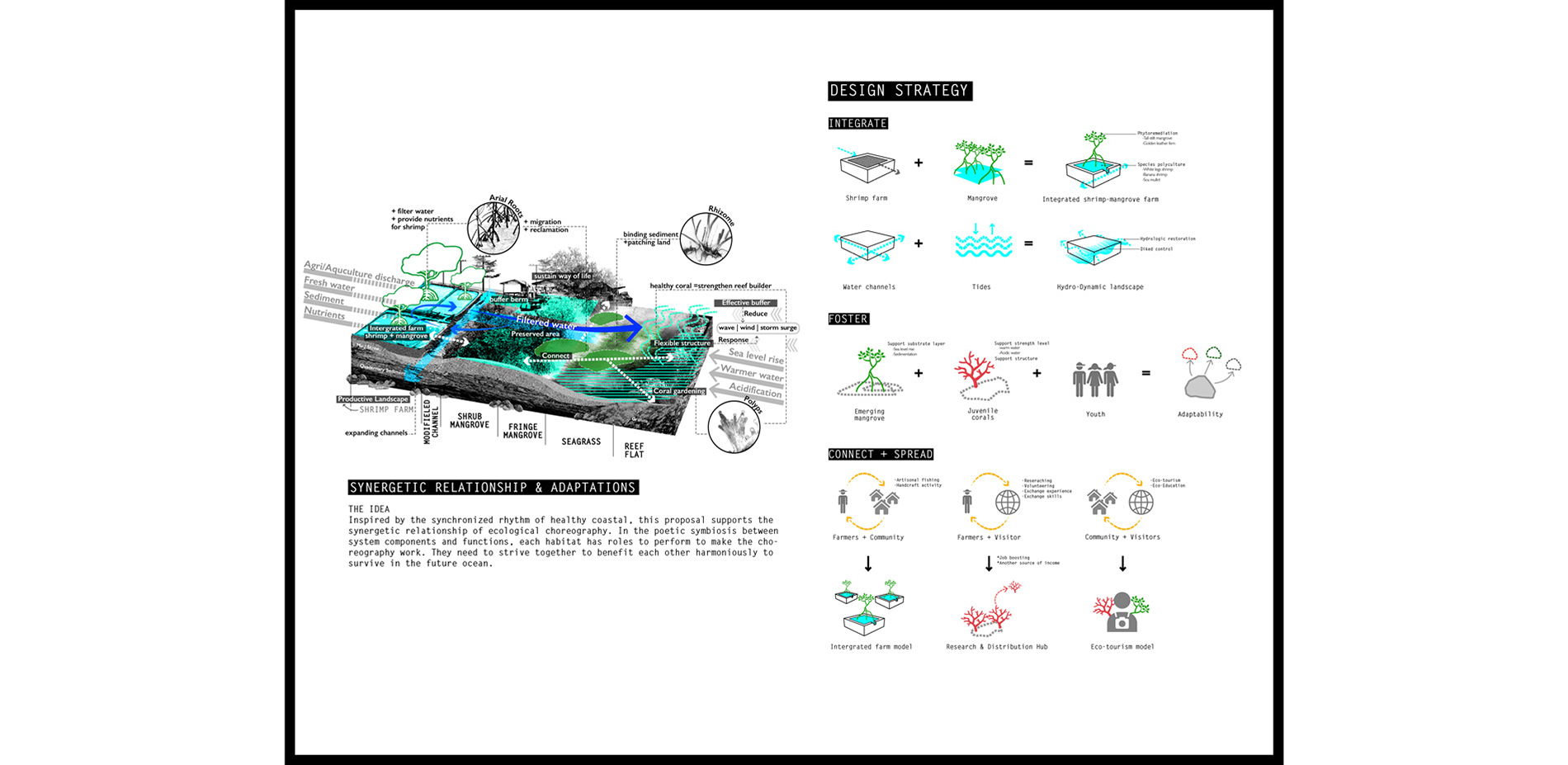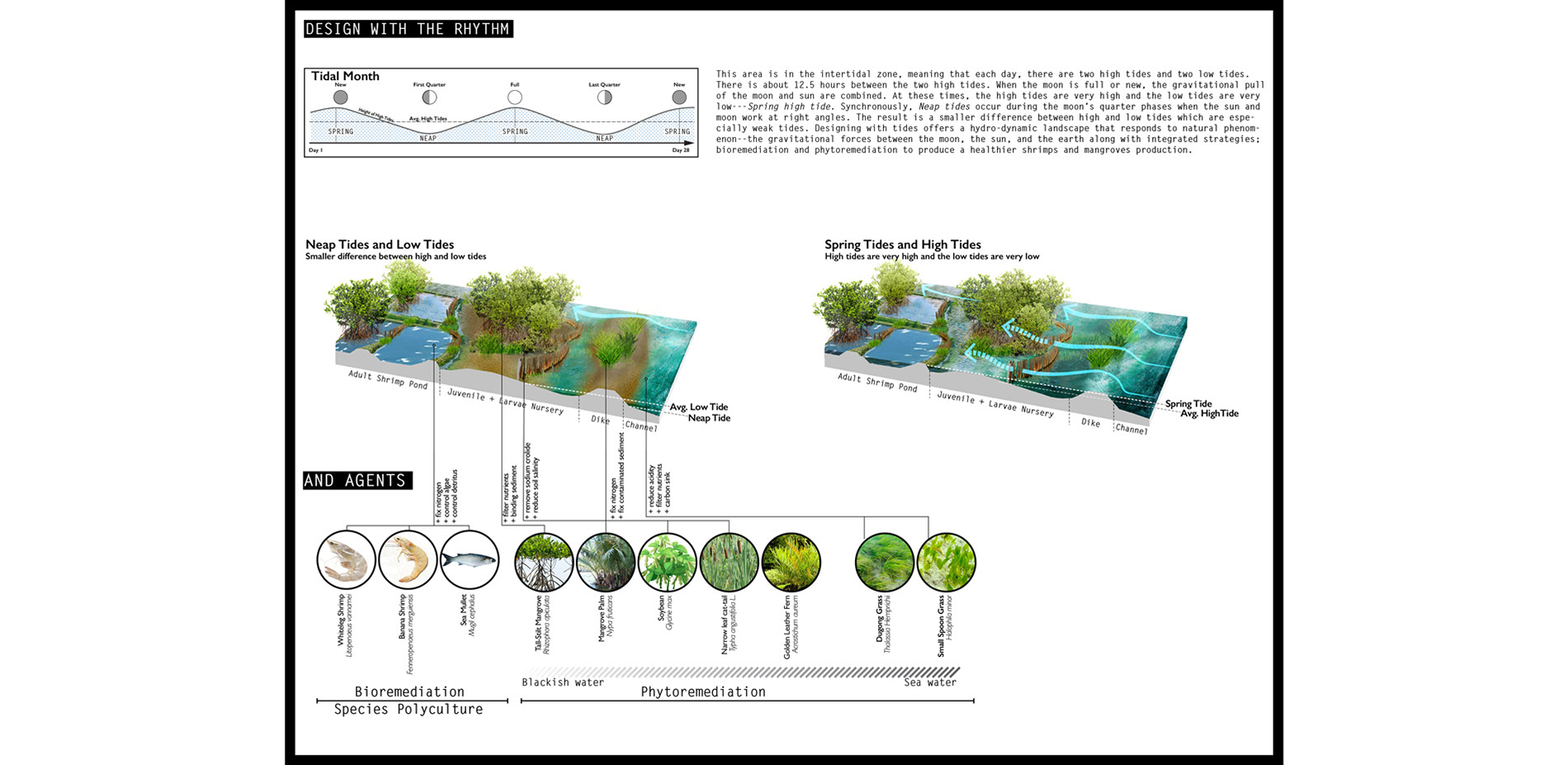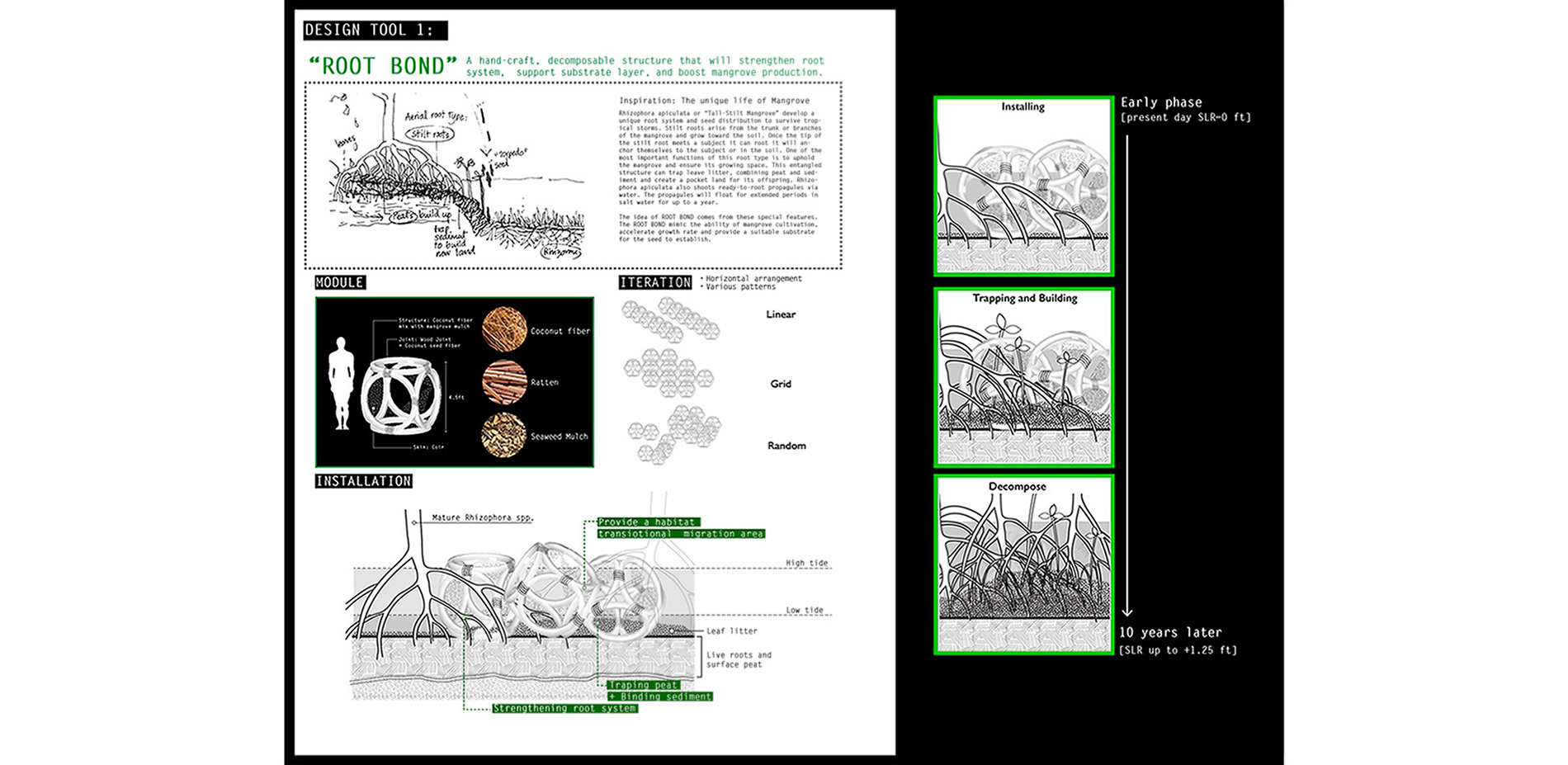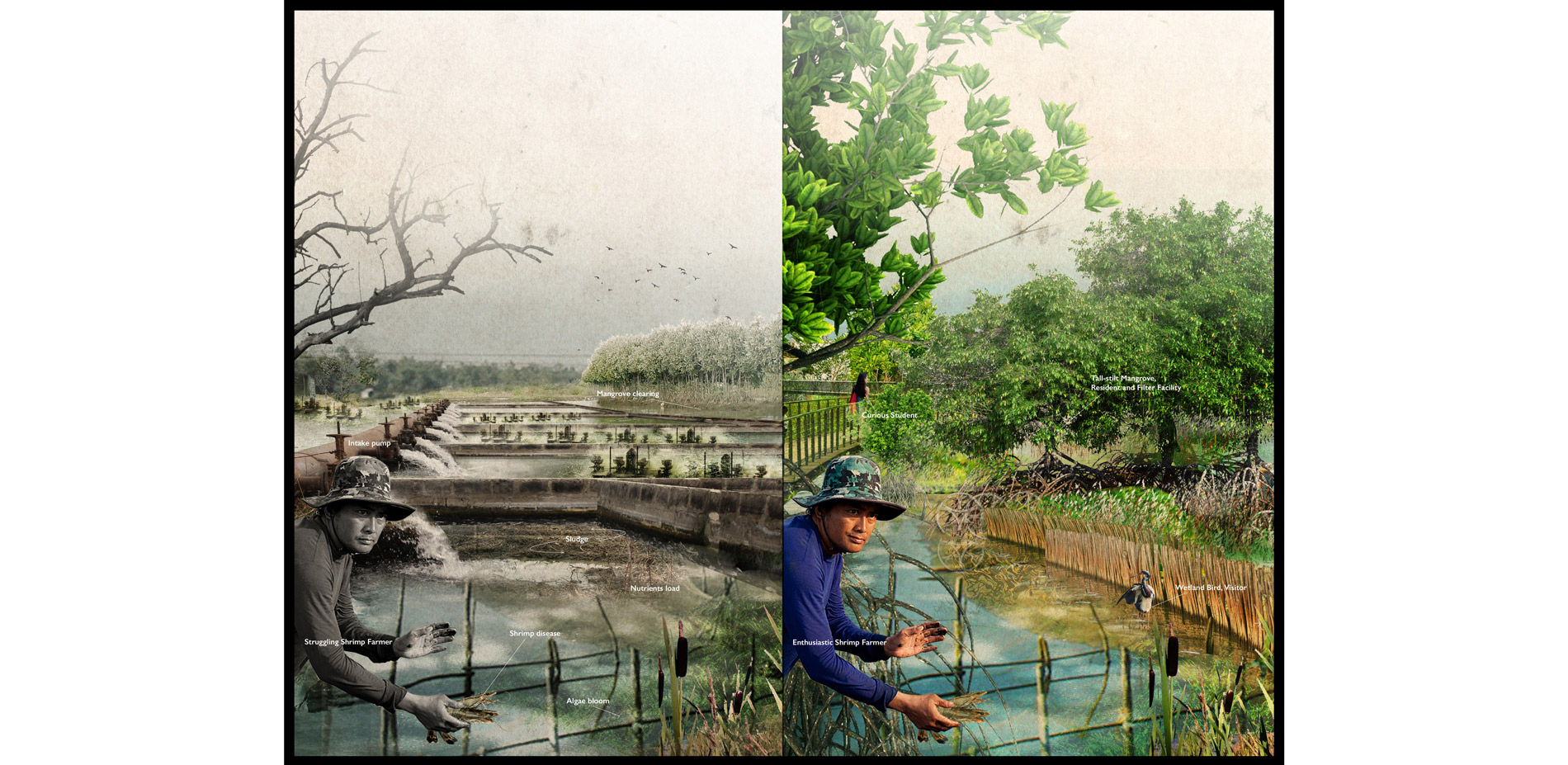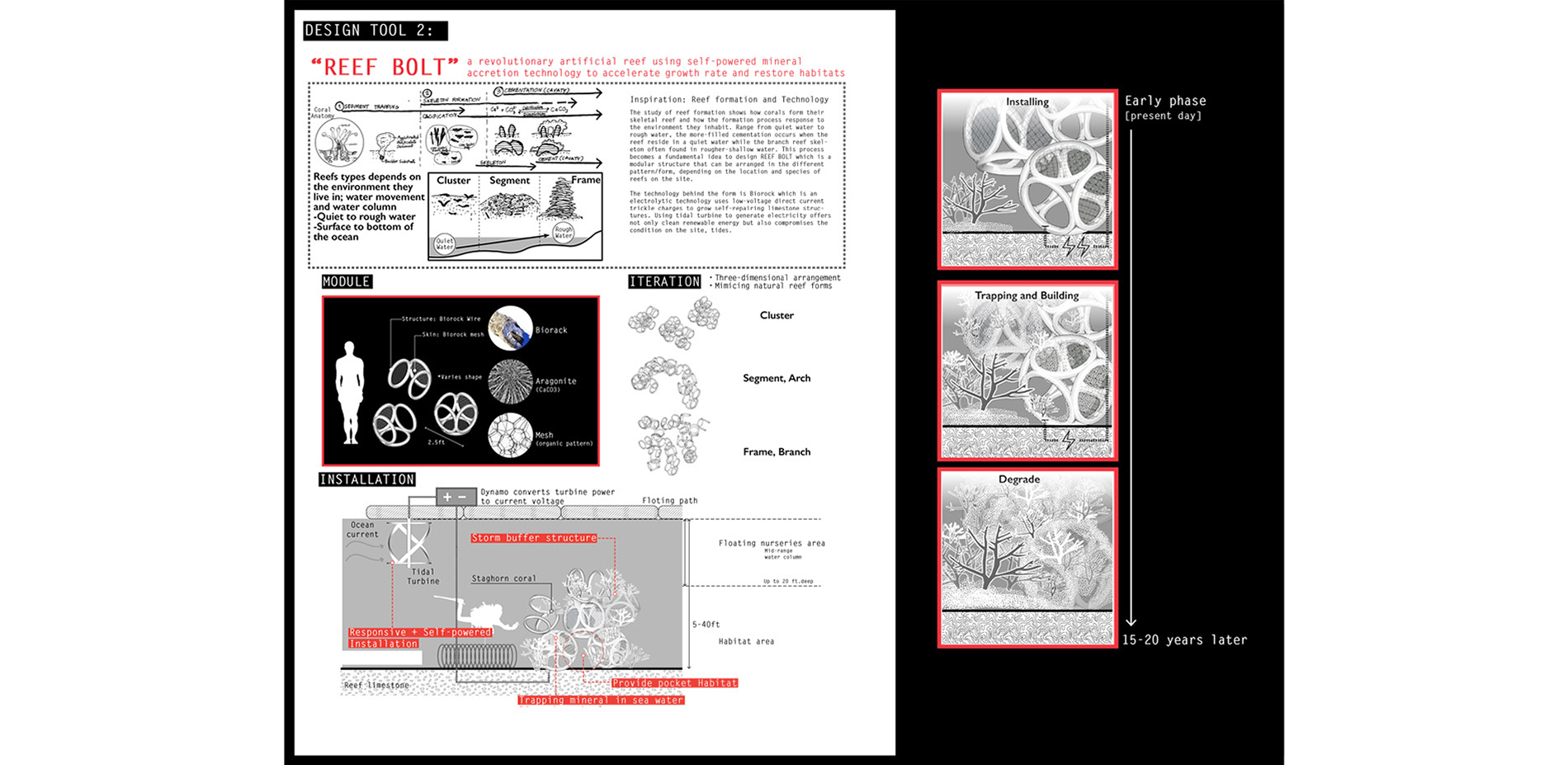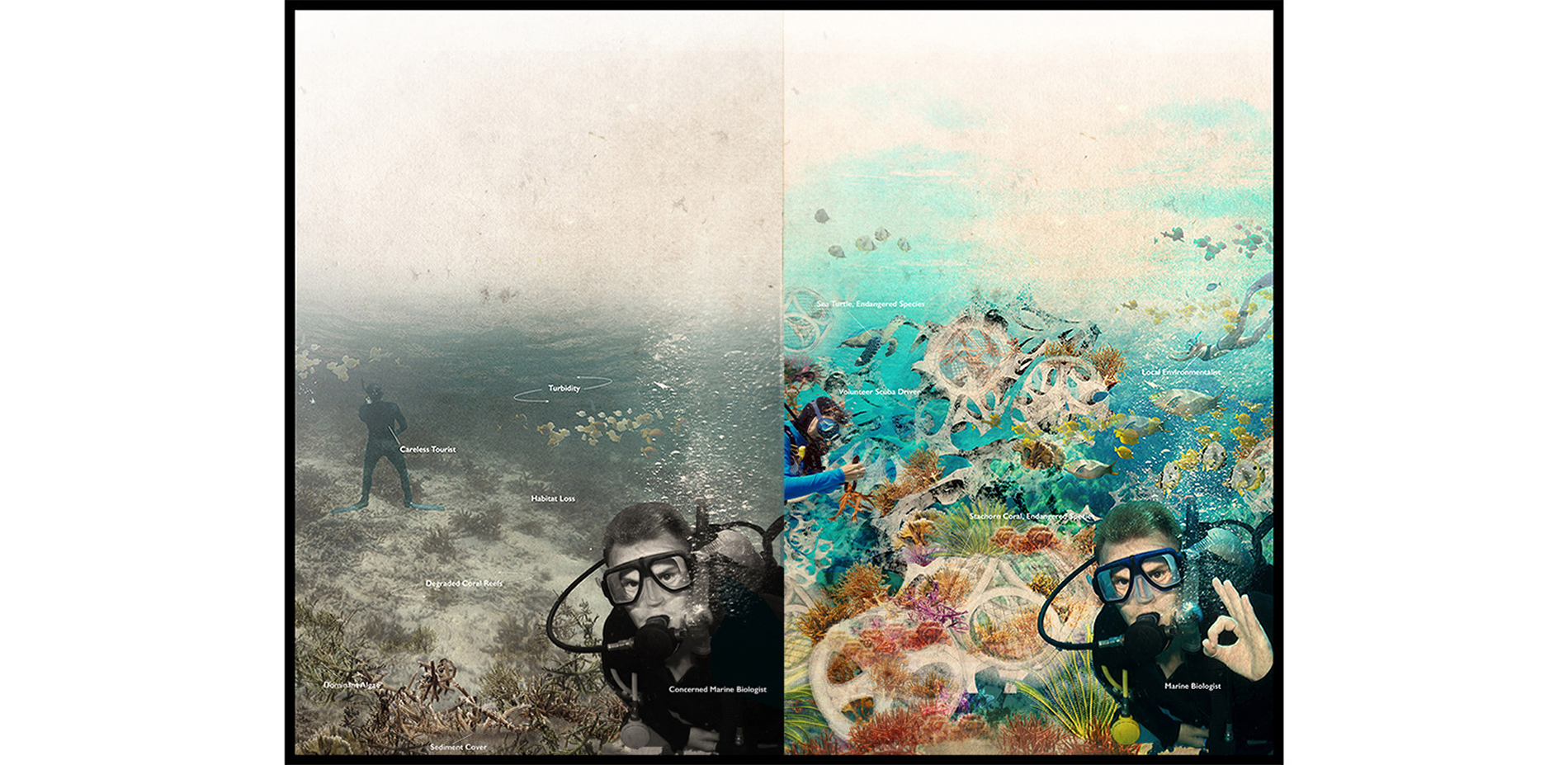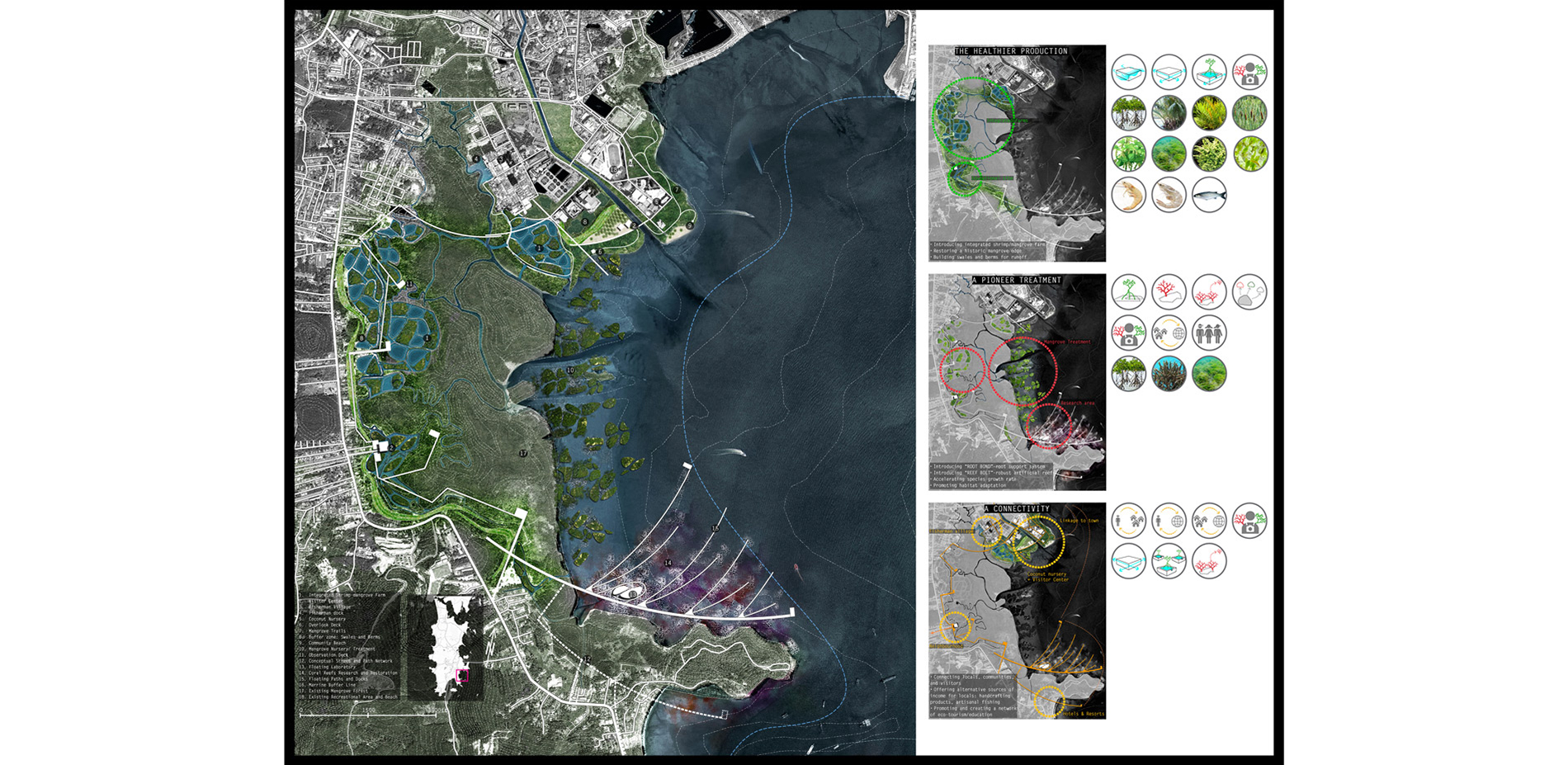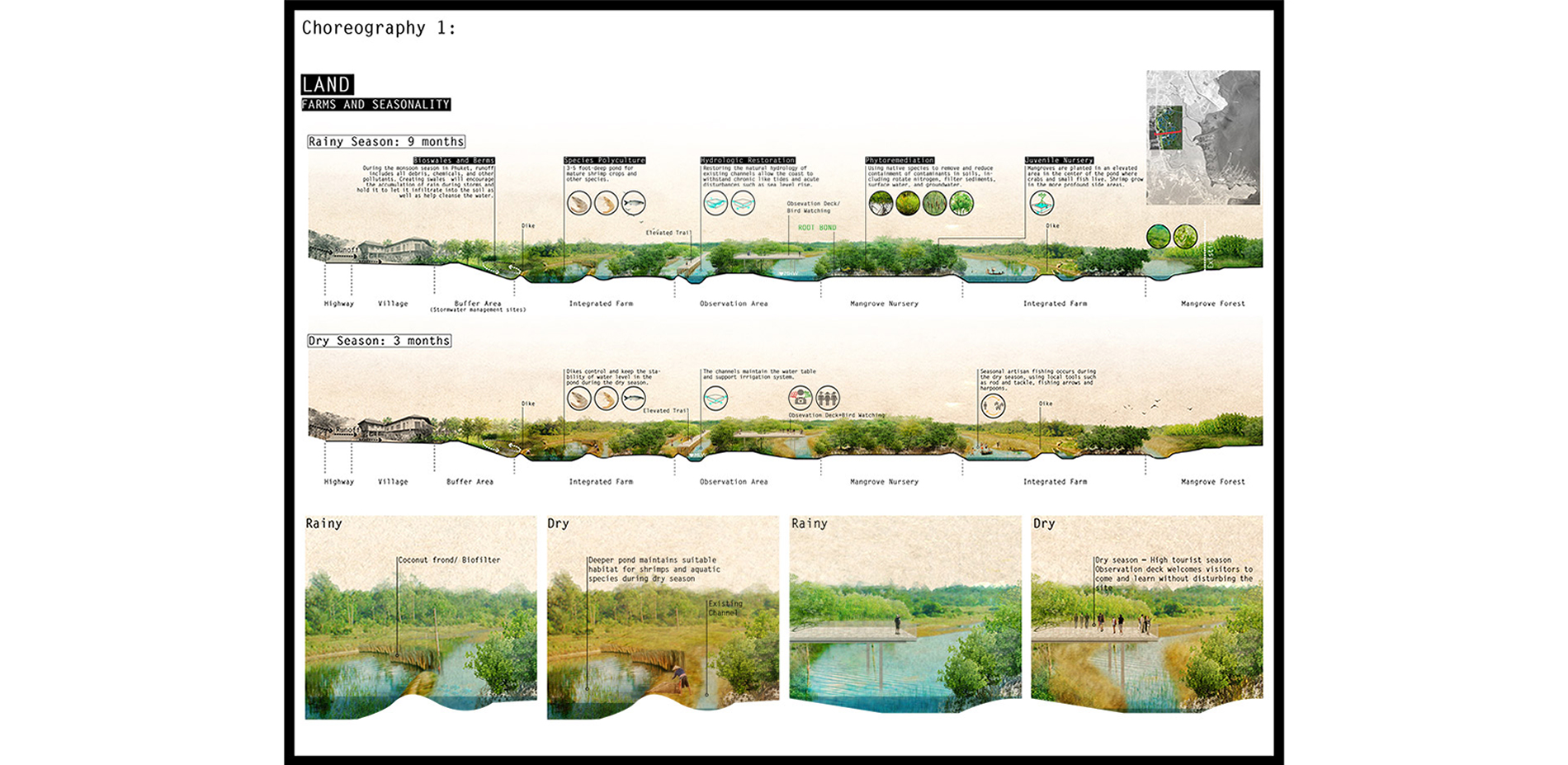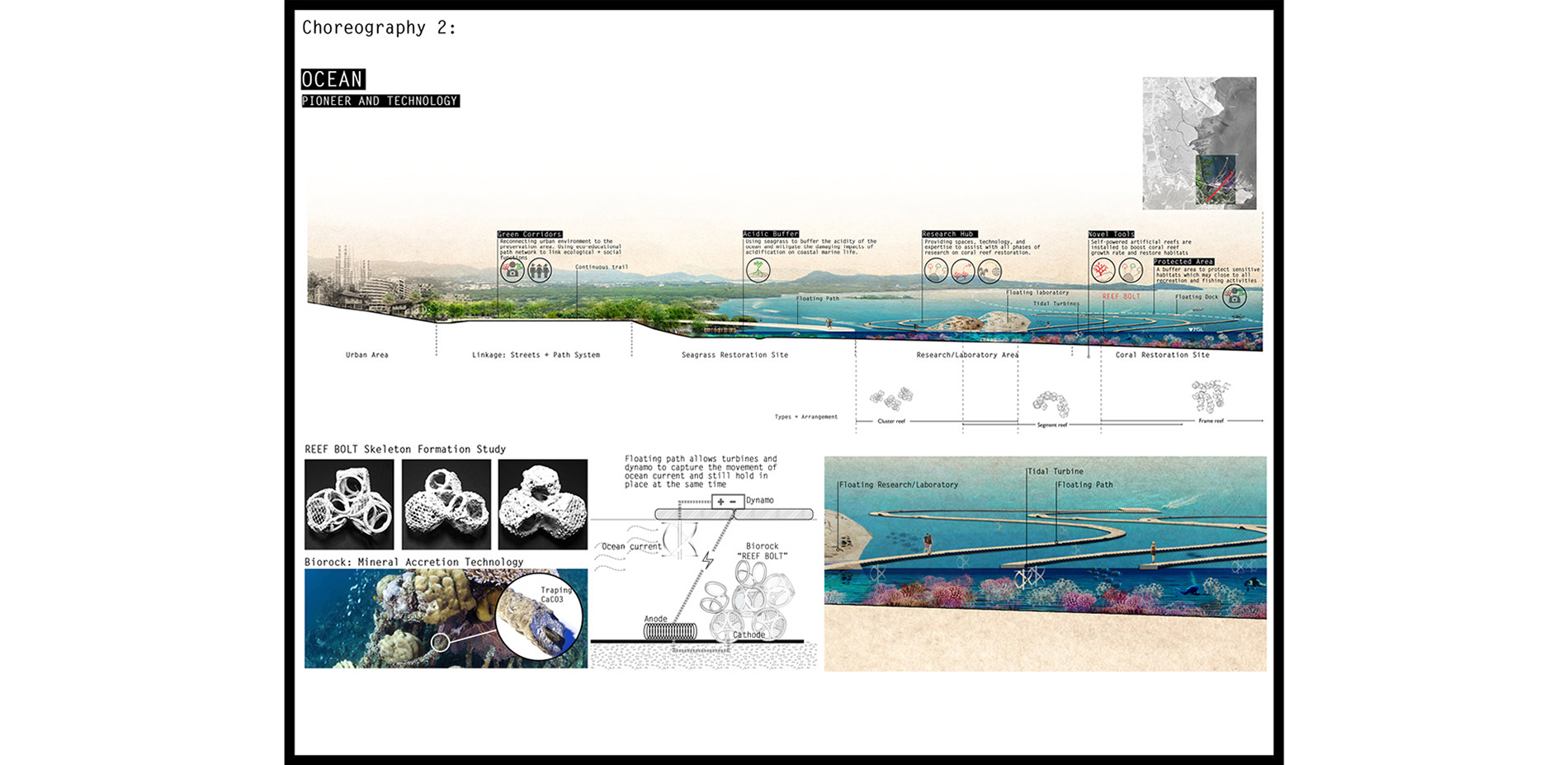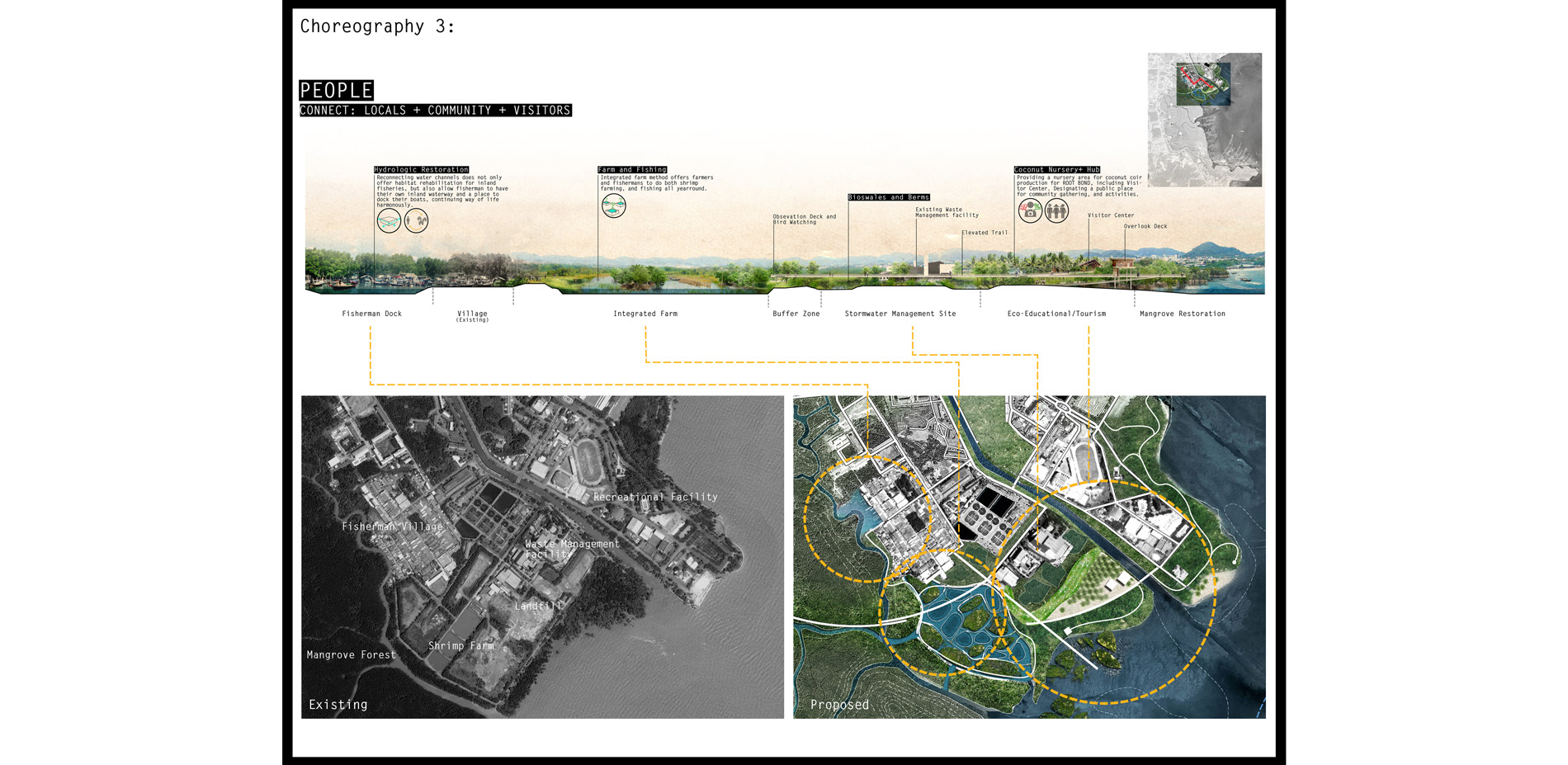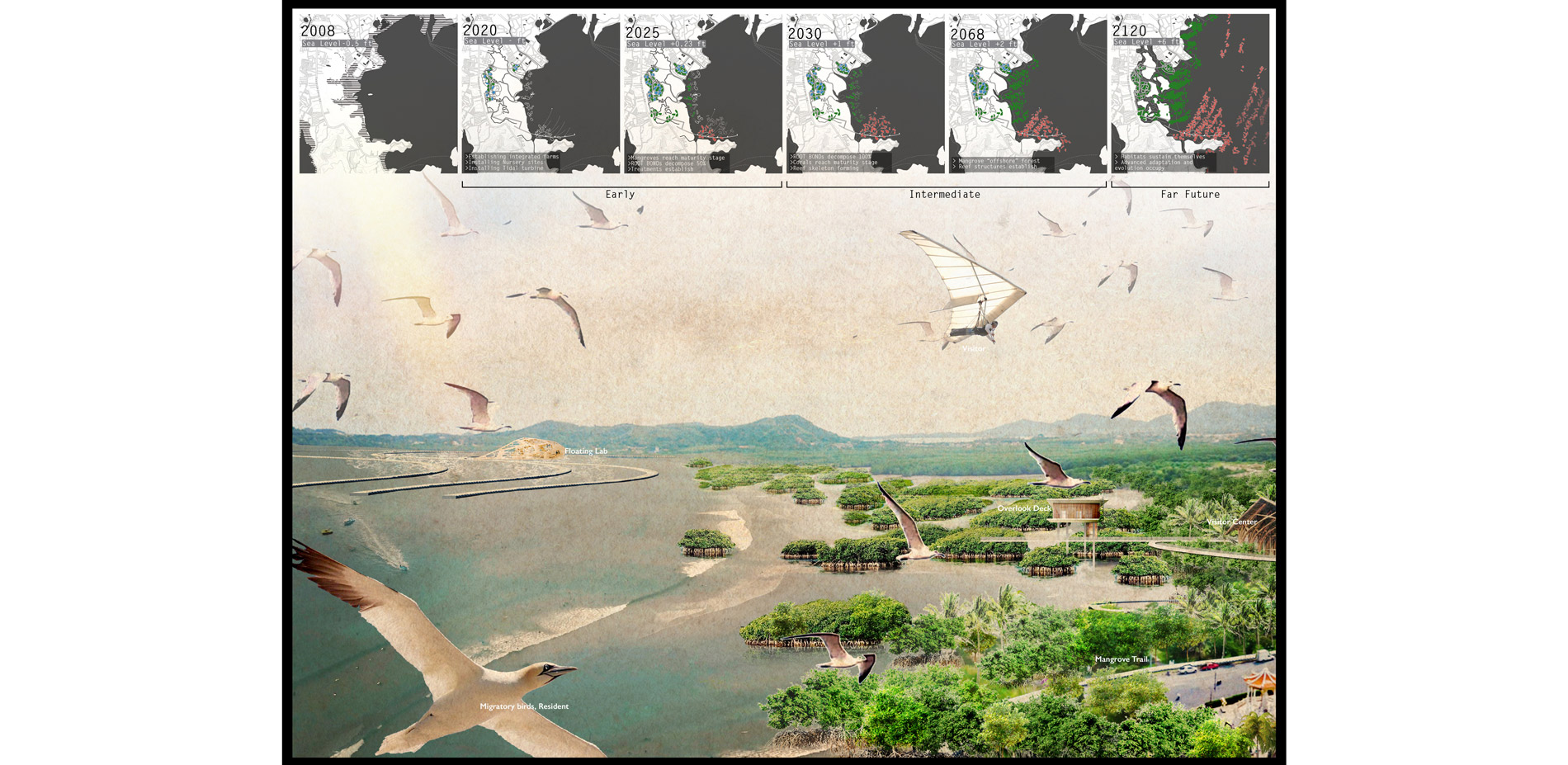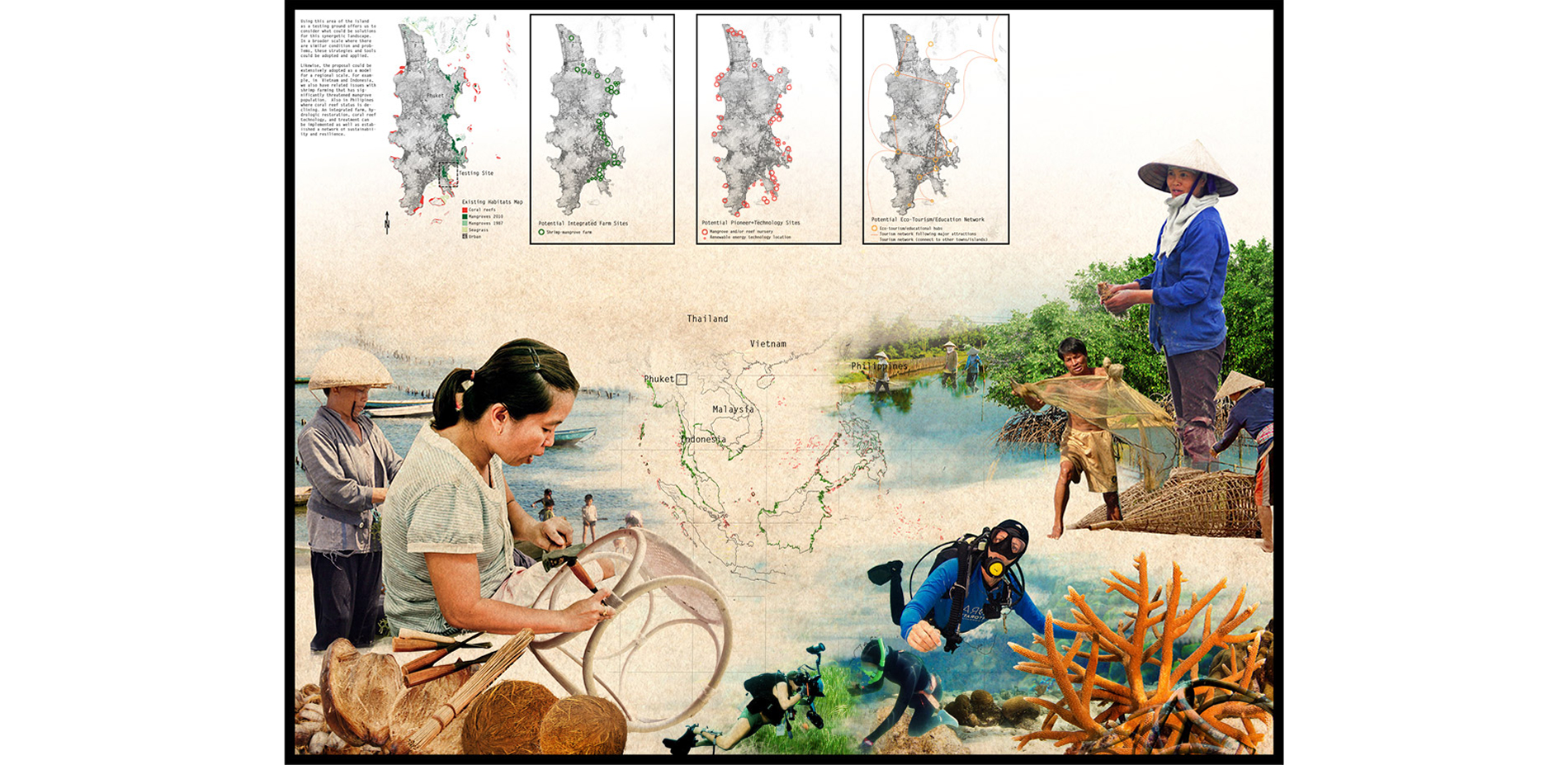Songs From The Ocean, Dancers From The Land: Rendering An Ecological Choreography of Coastal Habitats in Phuket, Thailand
HONOR AWARD
General Design
Phuket, Thailand | Kate Jirasiritham, Student ASLA | Faculty Advisors: Catherine Seavitt Nordenson, ASLA; Matthew Seibert, Associate ASLA
The City College of New York
We tend to reward minimalism, but sometime in cases like this, richness can be good. The drawings are classic. There is an eye and intelligence about this project that I really appreciated.
- 2018 Awards Jury
PROJECT STATEMENT
In the Anthropocene, human-induced environmental change effects diverse lives across every species. Our fate remains hopelessly entangled with myriad interdependent networks through the synchronous choreography of the ecosystem. Some ecosystems, invisible to the human eye, elude our consciousness. Underwater habitats, coral reefs, tidal flats, mangrove forests and seagrass beds link ecological processes across landscapes and seascapes, yet they suffer most from the slow violence of anthropogenic factors threatening the ecological and economic importance.
How can humans and other species continue the act of living with each other on Earth?
How can we design a landscape that supports interrelationships, systems, ecologies, and communities, all as one system?
This proposal explores a synchronized ecological system in the coastal habitats of Phuket, Thailand as one intricate choreography. The design attempts to conduct the synergistic relationships between system components and functions; one habitat plays music for the other to dance. With our most vital companions at stake, this project examines a way to work together, benefit each other, and ensure the survival of our future ocean.
PROJECT NARRATIVE
BACKGROUND & HISTORY
Linked habitats such as coral reefs, mangroves, and seagrasses have the ability to protect coastal communities against the impacts of storms and reduce wave energy. Each habitat has distinct roles to play to complement each other and reduce harm collectively. But with human disturbance such as shrimp farming interrupting these eco-mechanisms, destruction has become part of the whole system.
Since the 1970s, the shrimp farming industry showed steady growth along the coasts of Thailand, placing Thailand as one of the main producers of shrimp in the world. In Phuket, most of the farms were located on a flat area near the edge of a mangrove forest where there is access to open water. With the development of intensive farming techniques featuring smaller ponds, prepared feeds, fertilizers, chemicals, and antibiotics, shrimp farming rapidly took over thousands of hectares of mangroves. Nevertheless, the destructive farming eventually collapsed due to poor management practices and disease, and 60% of the shrimp farming area in Thailand was abandoned during the years 1989–1996. Left behind, remaining habitats continue to survive on damaged land, facing a combination of stressors from the oceanic climate-change to acidification to sea level rise. As a result, the tension between land and ocean grows.
SYNCHRONOUS CHOREOGRAPHY
Ideally, mangroves, seagrass, and coral reefs work and reside as one symbiotic system. Mangroves trap sediment and gather nutrients from the land, using their aerial roots to bind and create habitat for their offspring. Seagrass is a primary producer, exchanging nitrogen on off-shore habitats, using its rhizomatous roots to slow water movement and filter nutrients for the reef. The reef has micro animals called "Polyps" continuously building its surface. Besides producing food for corals, these animals also create calcium carbonate which is a fundamental substance for a reef skeleton--a natural structure for shoreline protection. Synchronously, reefs protect coastal habitats from waves and storms while mangroves and seagrasses trap sediment and filter water for corals to grow. Thus, all three habitats must remain healthy for each to thrive.
But with the impacts from destructive shrimp farming and development, sensitive habitats along the coastal area of Phuket have been declining. The surface and subsurface salinization of freshwaters, loading of sediments, algae, and nutrients were commonly found after the grow-out cycle, caused by pond drainage during harvesting and illegal pond sediment disposal. This pollution destroys an emerging habitat—the mangrove forest. Once the mangrove degrades, then the seagrass dies-out and the coral eventually loses its water-filtering companion. Over time, we lose these sensitive habitats while those that remain are in the critical status. As a consequence, the coastal community faces numerous problems--coastal erosion, strong storms, floods, and biodiversity loss.
THE IDEA
Inspired by the synchronized rhythm of healthy coastal, this proposal supports the synergetic relationship of ecological choreography. In the poetic symbiosis between system components and functions, each habitat has roles to perform to make the choreography work. They need to strive together to benefit each other harmoniously to survive in the future ocean.
STRATEGIES AND TOOLS
Strategy 1: Integrating
The early phase is to introduce an integrated strategy for shrimp farming. Shrimp farming will relate synergistically to the mangrove forest to create a healthier way to grow shrimp. Mangroves will be planted in an elevated area at the center of the pond where crabs and small fish live. Without using antibiotics and fertilizer, shrimp will grow deeper in the side areas. In addition, using hydrologic restoration strategies and designing with the rhythm of tides, the synergetic landscape can perform its dance with the natural forces of the ocean, in partnership. Bioremediation, species polyculture, and phytoremediation are also incorporated in the system as agents to support long-term sustainable aquaculture management. This strategy allows farmers to grow healthier shrimps, accommodate the mangrove population, and support both local economy and habitat health.
Strategy 2: Fostering with assistance from the tools
The early-intermediate phase will be establishing an innovative restoration strategy and treatment for coral reefs and mangroves on the edge of the shore. Ongoing studies will anticipate other stressors besides land-based pollutions, sea level rise, warmer water, and ocean acidification that are also threatening coastal habitats. Promoting the strength of emerging species—both mangroves and corals –is needed. Through the support of a designated-protected area and innovative tools, pioneer species will have a chance to adapt and evolve themselves to compete with stressors from the ocean that have not yet come. Additionally, this area will become a research/laboratory hub for researching, testing, monitoring, gardening corals, and distributing pioneer species and knowledge to other sites.
Tool 1: Root support system
ROOT BOND is a hand-craft, decomposable structure that will strengthen root systems, support substrate layers, and boost mangrove production. It also provides a transitional migration area for mangrove habitats responsively to sea level rise. In other words, when the sea level rises more than 1 ft, mangroves which are sensitive to the amount of dissolved oxygen they intake daily, will have a chance to survive on "new" land created by ROOT BOND.
Tool 2: Reef structural support technology
REEF BOLT is a revolutionary artificial reef using self-powered mineral accretion technology to accelerate growth rate and restore habitats which will be introduced to the site where existing degraded coral reefs are.
Both tools are different in material, function, and production but are designed based on the idea of supporting young species and can be degraded over time (i.e., ROOT BOND will be decomposed, REEF BOLT will be concealed).
Strategy 3: Connecting
Creating a network of activities among locals, communities, and visitors is essential to promoting an eco-tourism/education community. A coordinated network of elevated paths allows visitors to come and observe the site without disturbing the place. As Visitor Centers are placed where they can be links to neighborhoods, they also provide common areas for community gathering and tourist activities. Handcrafting restoration tools, volunteer mangrove/coral gardening, and eco-learning programs can be discovered here as well as conservation, education, responsible travel and active community programming. This strategy contributes deepened awareness and understanding between those on land and those in the water with mutually shared benefits, socio-environmentally and economically.
All in all, a new synergetic landscape will operate in three movements:
I. Production (integrated shrimp-mangrove farm)
II. Treatment (fostering sites, tools and research hub)
III. Connection (paths and activities network)
RESULT & CONCLUSION
Through the transformation of the site, the synergetic landscape creates new choreographical discourses between land, ocean, and people. Integrated shrimp-mangrove farming offers a sustainable production that synchronously in response to hydrologic conditions, treatment and tools, rehabilitate species and habitats, while people, either local or visitor, cooperatively engage in the network of activities.
Moreover, this strategy is not only limited to this specific site but can also be adopted and applied in other areas that have similar issues and conditions. Whether other areas on Phuket island or other countries in Southeast Asia such as Vietnam or Indonesia that have coastal erosion issue due to mangrove loss, this proposal offers an alternative solution for us to survive collaboratively with our nonhuman companions.
In this era where an ecological crisis is vividly real, no single habitat can survive alone. The project addresses how environmental players can operate as a singular system with many complex parallels and relationships within both ecological and cultural domains. With the choreography of land and ocean, humans and non-humans, habitats and community, the song and dances of our present day can continue the harmony of life into the future.
